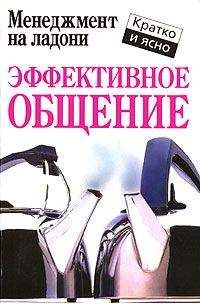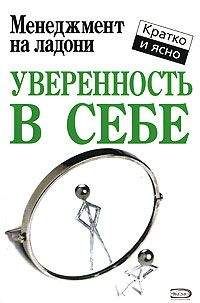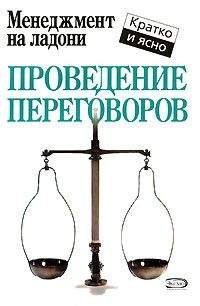Роберт Саттон - Охота за идеями. Как оторваться от конкурентов, нарушая все правила
297
Anton T. Bold Science (New York: Freeman, 2000), 12.
298
Grove A. Only the Paranoid Survive (New York: Doubleday, 1996), 89.
299
Coutu D. L. “Creating the Most Frightening Company on Earth: An Interview with Andy Law of St. Luke’s,” Harvard Business Review (September-October 2000): 146.
300
«Комитет 99» был образован в 1984 г. из руководителей и рабочих 55 предприятий General Motors и представителей 41 ячейки профсоюза рабочих машиностроительных отраслей для изучения и применения лучших подходов к интеграции людей и технологий в конкурентное производство небольшого автомобиля в США. – Прим. пер.
301
Langer E. J. “Minding Matters: The Consequences of Mindlessness-Mindfulness,” in Advances in Experimental Social Psychology, ed. L. Berkowitz (New York: Academic Press, 1989), 137–73.
302
Asakura R. Revolutionaries at Sony (New York: McGraw-Hill, 2000), 17.
303
March J. G. “Three Lectures on Efficiency and Adaptiveness in Organizations,” Swedish School of Economics, Helsinki, Finland, 1994, 53.
304
Кристенсен К. Дилемма инноватора: Как из-за новых технологий погибают сильные компании. – М.: Альпина Паблишер, 2012.
305
Tushman, M. L., P. C. Andersen, and C. O’Reilly III “Technology Cycles, Innovation Streams, and Ambidextrous Organizations: Organizational Renewal Through Innovation Streams and Strategic Change,” in Managing Strategic Innovation and Change, ed. M. L. Tushman and P. C. Andersen (New York: Oxford University Press, 1996).
306
United Automobile, Aerospace and Agricultural Implement Workers of America, сокр. UAW – Объединенный профсоюз рабочих автомобильной и авиакосмической промышленности и сельскохозяйственного машиностроения США. – Прим. пер.
307
Pfeffer, J., and R. I. Sutton. The Knowing-Doing Gap: How Smart Companies Turn Knowledge into Action (Boston: Harvard Business School Press, 2000).
308
Интервью с Гэри Хаем, директором подразделения совершенствования человеческих ресурсов, компания People Systems, Saturn Corporation, Детройт, Мичиган, 25 марта 1998 г.
309
Burrows P. and P. Elstrom. HP’s Carly Fiorina: The Boss // Business Week, August 2, 1999.
310
Hamel G. Leading the Revolution (Boston: Harvard Business School Press, 2000).
311
Alinsky S. Rules for Radicals (New York: Vintage Books, 1989).
312
Hamel G. Waking Up IBM // Harvard Business Review (July – August 2000): 5–11.
313
Там же, с. 9.
314
Данный материал позаимствован из интервью с Аннет Кайл от 17 сентября 1998 г. Более подробное описание революции Кайл см. Pfeffer and Sutton. The Knowing-Doing Gap.
315
MacFarquhar L. The Gilder Effect // The New Yorker, May 29, 2000, 103–111.
316
LaBarre P. The Company Without Limits // Fast Company (September 1999): 160–70.
317
Human Resources at the AES Corporation: The Case of the Missing Department. Case #SHR-3 (Palo Alto, CA: Graduate School of Business, Stanford University, 1997); а также O’Reilly III, C. A., and J. Pfeffer, Hidden Value (Boston: Harvard Business School Press, 2000).
318
Human Resources at AES, 15.
319
Katz R. The Effects of Group Longevity on Project Communication and Performance // Administrative Science Quarterly 27 (1982): 81–104; Katz R. and T. J. Allen. Investigating the Not-Invented-Here Syndrome: A Look at Performance, Tenure, and Communication Patterns of 50 R&D Project Groups // R&D Management 12 (1982): 7–19.
320
Gersick C., J. G. and J. R. Hackman. Habitual Routines in Task-Performing Groups // Organizational Behavior and Human Decision Processes 47 (1990): 65–97.
321
LaBarre P. This Organization Is Disorganization // Fast Company (June 1996): 77–80.
322
LaBarre P. This Organization Is Disorganization // Fast Company (June 1996): 80.
323
Там же.
324
Wilson T. D. and J. W. Schooler. Thinking Too Much: Introspection Can Reduce the Quality of Preferences and Decisions // Journal of Personality and Social Psychology 60 (1991): 181.
325
Slowiczek H. and P. M. Peters. Discovery, Chance and the Scientific Method // www.accessexcellence.com, October 1, 2000.
326
Chang K. Chemistry Nobel Recognizes Work in Plastics // The New York Times, November 11, 2000, A23.
327
Weick K. The Collapse of Sensemaking in Organizations: The Mann Gulch Disaster // Administrative Science Quarterly 38 (1993): 628–52.
328
Weick K. The Collapse of Sensemaking in Organizations: The Mann Gulch Disaster // Administrative Science Quarterly 38 (1993): 641–42.
329
Weick K. The Collapse of Sensemaking in Organizations: The Mann Gulch Disaster // Administrative Science Quarterly 38 (1993): 642.
330
Haslam S. A. et al. Inspecting the Emperor’s Clothes: Evidence that Randomly Selected Leaders Can Enhance Group Performance // Group Dynamics: Theory, Process and Research 2 (1998): 168–84.
331
Malkiel B. G. A Random Walk Down Wall Street, 7th ed. (New York: Norton, 2000).
332
Malkiel B. G. A Random Walk Down Wall Street, 7th ed. (New York: Norton, 2000): 1.
333
Weick K. E., and R. L. Daft. The Effectiveness of Interpretation Systems. Organizational Effectiveness: A Comparison of Multiple Models ed. K. S. Cameron and D. A. Whetten (New York: Academic Press, 1983), 74.
334
Bennis W. Why Leaders Can’t Lead (San Francisco: Jossey-Bass), 21.
335
Matlin M. and D. Stang. The Pollyanna Principle (Cambridge, MA: Schenkman, 1978).
336
Anonymous. Business: Rebuilding the Garage // The Economist, July 15, 2000, 59–60.
337
www.hp.com/ghp/features/invent/gene.pdf.
338
Surowiecki J. The Billion-Dollar Blade // The New Yorker, June 15, 1998, 43–49.
339
Surowiecki J. The Billion-Dollar Blade // The New Yorker, June 15, 1998, 46.
340
Об этом эксперименте мне рассказала в телефонном интервью Фрида Клейн, 12 октября 2000 г.
341
Fishman, C. “Creative Tension,” Fast Company (November 2000): 358–88.
342
Из речи Уильяма Э. Койна в корпоративном университете Motorola в г. Шаумбург, штат Иллинойс, 11 июля 2000 г.
343
MacKenzie, G. Orbiting the Giant Hairball (New York: Viking, 1998), 63.
344
Там же, с. 64.
345
Pfeffer, J., R. B. Cialdini, B. Hanna, and K. Knopoff. “Faith in Supervision and Self-Enhancement Bias: Two Psychological Reasons why Managers Don’t Empower Workers, Basic and Applied Psychology 20 (1998): 313–21.
346
Shields, D. “The Good Father,” The New York Times Magazine, April 23, 2000, 58–61.
347
Там же, с. 60.
348
Там же.
349
Hargadon, A., and Y. Douglas. “When Innovations Meet Institutions: Edison and the Design of the Electric Light,” working paper, Warrington College of Business Administration, September 2000. University of Florida Gainesville.
350
Там же, с. 19.
351
Metcalfe, B. “Invention Is a Flower, Innovation Is a Weed,” MIT Technology Review (November/December 1999): 56.
352
См., например, Burgelman, R. A. “A Process Model of Internal Corporate Venturing in the Diversified Firm,” Administrative Science Quarterly 28 (1983): 223–44.
353
Ngueyen, P. D. “A Faster Plan,” Red Herring (May 2000): 138–46.
354
Cialdini, R. B. Influence: The New Psychology of Modern Persuasion (New York: Quill, 1984).
355




